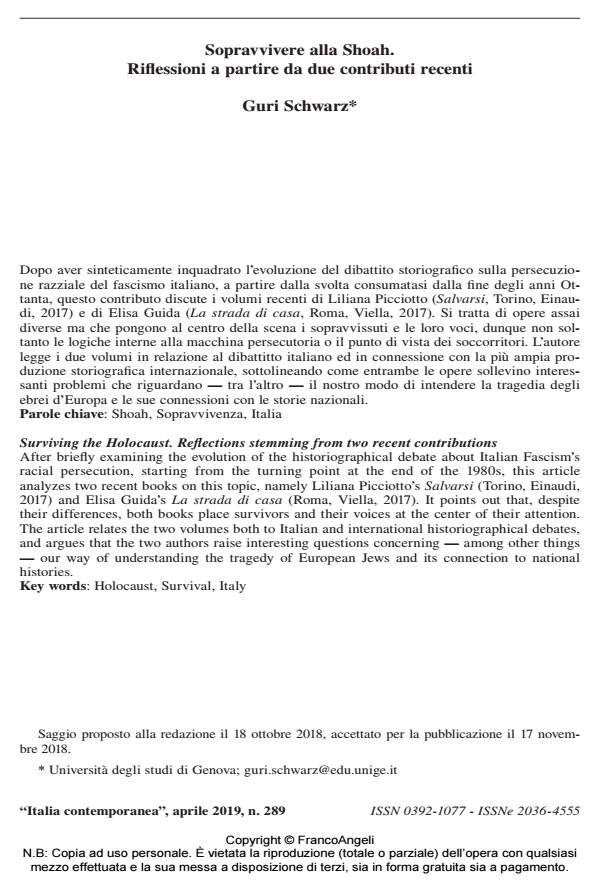Surviving the Holocaust. Reflections stemming from two recent contributions
Journal title ITALIA CONTEMPORANEA
Author/s Guri Schwarz
Publishing Year 2019 Issue 2019/289
Language Italian Pages 15 P. 166-180 File size 127 KB
DOI 10.3280/IC2019-289008
DOI is like a bar code for intellectual property: to have more infomation
click here
Below, you can see the article first page
If you want to buy this article in PDF format, you can do it, following the instructions to buy download credits

FrancoAngeli is member of Publishers International Linking Association, Inc (PILA), a not-for-profit association which run the CrossRef service enabling links to and from online scholarly content.
After briefly examining the evolution of the historiographical debate about Italian Fascism’s racial persecution, starting from the turning point at the end of the 1980s, this article analyzes two recent books on this topic, namely Liliana Picciotto’s Salvarsi (Torino, Einaudi, 2017) and Elisa Guida’s La strada di casa (Roma, Viella, 2017). It points out that, despite their differences, both books place survivors and their voices at the center of their attention. The article relates the two volumes both to Italian and international historiographical debates, and argues that the two authors raise interesting questions concerning - among other things - our way of understanding the tragedy of European Jews and its connection to national histories.
Keywords: Holocaust, Survival, Italy
Guri Schwarz, Sopravvivere alla Shoah. Riflessioni a partire da due contributi recenti in "ITALIA CONTEMPORANEA" 289/2019, pp 166-180, DOI: 10.3280/IC2019-289008